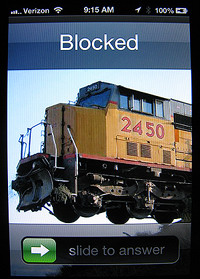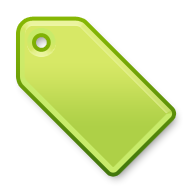How do you see BLOCKED and PRIVATE numbers on CallerID?
The short answer is that there's no way to do that on a regular POTS line.

BUT... you could forward your POTS number to some (not all) 800 numbers. The 800 number provider you get the number from would forward the call to another real POTS line or VoIP line you have (that has Caller ID) and might show the caller's Caller ID even if the caller tried to block it.
Note that there is no way to get the true number if the Caller ID is spoofed. If the caller is using a PRI or some types of VoIP, they enter the phone number to be displayed manually. They can enter whatever they want. If you see 000-000-0000 with NOT IN USE for the Caller ID that's because that's what the technician put in for the number in the equipment. There's nothing you can do to get the real number/company behind that number.
Sometimes you might see a phone number like 163-098-0771 (instead of the real number 630-980-7710) in your Caller ID. That's because the technician screwed up and put a 1 in-front of the number when he entered the programming for the trunk (you normally don't enter a 1 in a field like that).
To add more complexity this also depends on the particular phone company providing the POTS line you're forwarding. It will work with most, but not all.
This may not work with the 800 number forwarded to a cell phone since the cell phone companies hack up the Caller ID info they receive.
If you use the right 800 number provider they give you the number of the actual caller that was forwarded to the 800 number (even though it was blocked). You get that as Caller ID on the number that the 800 number is forwarded to (a VoIP or POTS line).
That SOMETIMES works because when calling an 800 number the equipment gets ANI, not Caller ID. ANI can't be blocked because the 800 number owner is paying for the incoming call. Caller ID to POTS lines can be blocked.
Sometimes with the same 800 number provider it will work to a VoIP line or SIP trunk, but not to a POTS line.
Sometimes the 800 number provider sees the phone number of the POTS line that the call is forwarded from, and sends that instead. Seeing the number that forwarded the call to the 800 number isn't useful for most of us. The 800 provider can do whatever they want. There is no standard.
How do you know if a particular 800 number provider will show you the caller's number, or the number that's forwarded? You don't until you try it with a particular 800 number provider.
How do you know that the Caller ID will show the number if the caller blocked it? You don't until you try it with a particular 800 number provider.
How do you know if it will work going to a POTS line, VoIP line or SIP trunk? You don't until you try it with the POTS line, VoIP line and SIP trunk.
I don't have a list of what works with what. If you come up with a combination let me know and I'll put it in our Caller ID Tech Bulletin.
As you've probably noticed asking anybody at a phone related company a technical question gets you nowhere. Pretty frustrating. But if "unblocking" Caller ID is important to you or your business it may be worth the pain of getting an 800 number from providers and testing to see if it works the way you want to the number you want (asking them is a waste of time).
Once you find a company that works the way you want it's unlikely they'll change it. Unless the 800 number provider is bought out (which is likely these days). It worked for us with 800 numbers we got from Cable & Wireless but stopped working when they sold out to Primus - so you can cross Primus off your list.
A word of warning about 800 numbers... If you get an 800 number from a real phone company that provides 800 numbers, called a RespOrg, it's probably yours to keep forever (but there is some possibility you could lose it). You can easily have them change the POTS number or VoIP line it's forwarded to when you need to.
If you get an 800 number from some kind of service company, like a VoIP provider or voice mail company, if you cancel their service, you may not get to keep the number. NEVER give out that type of 800 number to a customer! When you change service providers (because of price or service) you probably won't be able to keep that number - which is something they use to keep you from cancelling their service.
And if that company goes out of business you may lose the 800 number anyway.
Our company rents an Asterisk server (PBX) from aretta.com (it's a test system - not live). aretta.com also offers SIP trunks. We rent a few 800 numbers from them that we use internally for testing (we don't publish the numbers and although they say we can move it to another 800 number provider, I'm not counting on it).
When we forward an AT&T POTS line to an Aretta 800 number and the Asterisk server tries to forward that to a cell phone we see the number that forwarded the call, not the caller's number.
When the Asterisk server forwards the call to an extension on the Asterisk PBX or a real AT&T POTS line with Caller ID, we see both regular and blocked / unavailable calls on the POTS line and both a Linksys ATA (an analog adapter going to an analog Caller ID box) and on a Polycom VoIP phone (I tried it on an IP 550).
If you'd like to see how it works give me a call and I'll give you an 800 number to call when dialing *67. You can even try forwarding a POTS line to that 800 number to see if I see the number you dialed from, when you call the POTS line using *67.
Note that we don't have a T1 or PRI here for 800 numbers, which would show the number you're calling from even if you dialed *67 (using ANI), without going through all this. If you have a real T1 your telephone system will show you the ANI and never show blocked or unavailable not matter what the caller dialed (but you don't get name with ANI on a T1).
By the way calling Aretta to ask them about it is useless. They were bought out by Cbeyond a while ago and support really went downhill after that. They don't have a clue.
For more information on Spoofing and Caller ID see our Caller ID Tech Bulletin
We all want to know... Can Robo Calls with fake Caller ID be stopped?
One of the biggest problems in answering the phone these days are spoofed Caller ID robo calls. On both land lines and cell phones.
A new service is just starting up this month to try to get rid of robocalls. They won the FTC's contest to get rid of robo calls and are offering the free service to subscribers of phone companies who offer a "simultaneous ring" option (no real phone companies at this point), which allows their server to get the call to see the Caller ID - and cut the call off before you get it (based on their database of criminal telemarketers).
They claim that they can tell which calls have spoofed Caller ID. Since all calls made from a PBX with a PRI have a phone number put in by the installer I don't know how they do that.
They just started. I don't know if they are good or bad: http://www.nomorobo.com/

 Products
Products